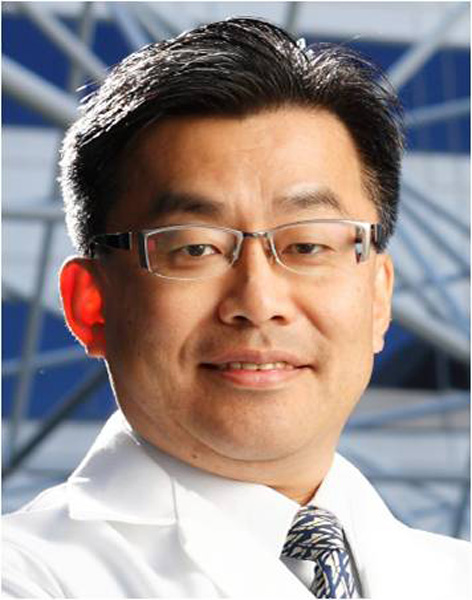| Subject | Urology | ||
| Staff |
Associate Professor: Fumiya Hongo,Masayoshi Okumi
Lecturer: Yasuyuki Naito, Astuko Fujihara
Assistant Professor: Takumi Shiraishi,Takashi Ueda,Masatsugu Miyashita,
Yumiko Saito,Hideto Taga,Masashi Tsujimoto
|
||
| Research Contents |
Department of Urology, Kyoto Prefectural University of Medicine
University Hospital, Kyoto Prefectural University of Medicine is located at the center of the Japanese-thousand-years ancient capital, Kyoto, Japan. It is a beautiful historical place between the Kamogawa River and the Kyoto Imperial Palace. At the east side over the scenic Kamo River, we can see Mount Hiei and Daimonji in the Higashiyama Mountain range. The Department of Urology of Kyoto Prefectural University of Medicine, was established in 1964 and has a history spanning over 50 years. I joined our department 28 years ago and since then over 140 urological members have been active at affiliated hospitals in mainly Kyoto as well as Shiga, and Osaka prefecture. We cherish “love of humanity”, “dream” and “harmonious cooperation” and are involved with medical care, research and human resource development. Under the staffs of our department who all are board certified urologists, a lot of talented young urologists are gathering to create their own dreams and future.
Outpatient Care
Urology is a special field covering the organs of the urinary tract (kidney, ureter, bladder and urethra) and the male reproductive system (prostate, testis and penis etc.) The diseases related to the adrenal gland and the retroperitoneum are also an object for urology. There are a variety of diseases in the field of urology, such as urological cancers (prostate cancer, renal cancer, urothelial cancer and testicular cancer etc.) and urinary dysfunction (benign prostate hyperplasia, overactive bladder and urinary incontinence etc.). Furthermore, urology also encompasses female urology, pediatric urology, male sexual dysfunction, male infertility, urinary infection and urinary stone. In our department, professional staffs in each fields can manage a wide range of urological diseases in specialty outpatient clinic. A woman doctor is always in charge of outpatient clinic for female urology.
Medical and Surgical Treatment
Urology is a part of surgery and our department can offer a variety of options including the state-of-the-art treatment as well as the standardized medicine and surgery while considering the efficacy, safety and invasiveness of treatment, and quality of life for patients. For examples, there are a lot of options such as robot assisted surgery, laparoscopic surgery, endoscopic surgery, highly difficult open surgery, urinary diversion, percutaneous cancer targeted therapy, new medical treatment, new function-sparing therapy, the latest radiation therapy, active surveillance and palliative care. We can provide accurate information in order for patients to select the best option in their own situations. I believe that patients’ proactive decision (adherence) is one of the most important keys that leads to the success of the treatment.
Research
We have devoted ourselves to clinical and basic research in each specialized field, by which we have discovered innovative solutions to limitations of current medicine and newly emerged problems to be solved. As a consequence, we have discovered and reported the latest medical technology and the latest result of basic research, and made our best effort to internationally impact on the world. Our department can be characterized by our special environment and experience where we are able to conduct international exchange and collaborative research with foreign medical institutions.
|
||
| Achievements |
|
||
| Contact |
tel 81-75-251-5595
fax 81-75-251-5598 e-mail uro1@koto.kpu-m.ac.jp |
||
| HP | http://kpum-urology.com/ |















